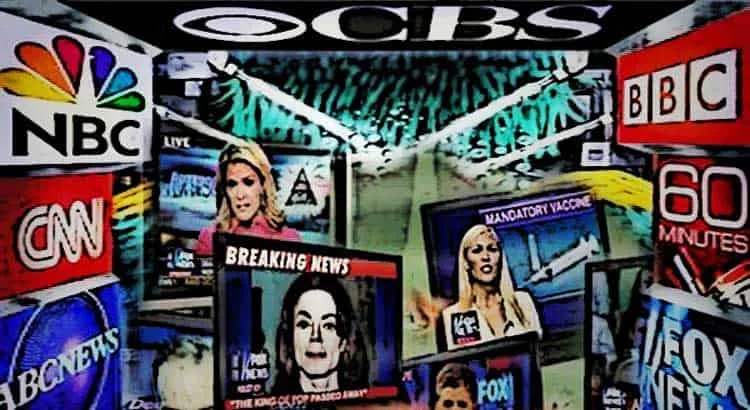
The mainstream media refers to the large, well-established media outlets and organizations that are widely recognized and consumed by the general public. These outlets typically have a large audience and a significant impact on public opinion and discourse.
It can include television networks, newspapers, magazines, radio stations, and online news websites. These outlets are often owned by large corporations and have a significant amount of resources and influence.
The mainstream media is often contrasted with alternative media outlets, which are smaller and less well-established, and may offer a different perspective or focus on niche topics. The mainstream media is also distinct from social media, which is a platform for individuals to share their own content and opinions.
Some examples of mainstream media outlets include:
- Television networks: ABC, CBS, NBC, CNN, Fox News, MSNBC
- Newspapers: The New York Times, The Washington Post, The Wall Street Journal, USA Today
- Magazines: Time, Newsweek, People, The New Yorker
- Radio stations: NPR, CNN Radio, ESPN Radio
- Online news websites: CNN.com, FoxNews.com, BBC News, Al Jazeera
The mainstream media plays an important role in shaping public opinion and discourse, and can have a significant impact on politics, culture, and society. However, it is important to note that the mainstream media is not always representative of diverse perspectives and voices, and alternative media outlets can provide a valuable counterbalance to the dominant narratives presented by the mainstream media.
Characteristics
Here are some key characteristics of mainstream media:
- Large reach: They have the capacity to reach a massive audience through national TV networks, major broadcast radio stations, and widely circulated newspapers.
- Focus on general news: They primarily cover major events and topics of broad interest, encompassing politics, economics, entertainment, sports, and more.
- Professional journalism: They employ journalists who adhere to professional standards of ethics and fact-checking, aiming to provide objective and accurate reporting.
- Commercial interests: Many are for-profit businesses relying on advertising revenue, which can influence their editorial choices and priorities.
- Criticism and perceived bias: They are often criticized for presenting a biased perspective, favoring certain viewpoints or omitting certain information.
However, it's important to remember that "mainstream media" is not a monolithic entity. There are significant variations within the label, including:
- Political leanings: Different outlets may have varying degrees of perceived bias towards a particular political ideology.
- Target audience: Some news organizations cater to specific demographic groups or focus on niche areas like business or sports.
- Journalistic approach: There are differences in the level of editorializing and the focus on investigative journalism vs. reporting current events.
In recent years, the rise of alternative media including online news sources and social media, has challenged the dominance of traditional mainstream media. Alternative media often offers different perspectives, focuses on marginalized voices, and can hold mainstream media accountable.
History
The history of mainstream media is a long and fascinating journey, tracing the evolution of how information is disseminated and consumed by the masses. Here's a glimpse into its key chapters:
Early beginnings (17th-18th centuries):
- Rise of newspapers: The printing press ushered in the era of news pamphlets and later, newspapers, with the first English-language newspaper, "The London Gazette," appearing in 1665. News was primarily factual and often government-controlled.
- Development of postal systems: This facilitated wider distribution of news across regions and countries.
- Literacy advancements: As literacy rates increased, the market for written news expanded, paving the way for more diverse publications.
Industrial Revolution and beyond (19th-20th centuries):
- The rise of the penny press: Cheap, sensational newspapers like "The New York Sun" captured the attention of working-class populations with engaging stories and human-interest reporting.
- Technological advancements: The invention of the telegraph and later, the telephone, revolutionized news transmission and reporting speed.
- Birth of radio and television: These new mediums ushered in the era of broadcast journalism, bringing live events and news directly into people's homes.
- Rise of media conglomerates: Mergers and acquisitions led to the concentration of ownership in the hands of large corporations, influencing the content and reach of various outlets.
The modern era (late 20th-21st centuries):
- Cable news and the 24-hour news cycle: The launch of CNN in 1980 and the proliferation of cable channels changed the landscape, offering nonstop news coverage and fueling a more competitive environment.
- Rise of the Internet and digital media: The internet revolutionized access to information, spawning online news sites, blogs, and social media platforms, challenging the traditional gatekeepers of news.
- Erosion of trust in mainstream media: The rise of "fake news" and concerns about media bias have challenged the public's trust in traditional news sources.
Looking Forward:
The future of mainstream media remains uncertain, as it navigates the challenges of online competition, changing audience preferences, and the need to adapt to new technologies. Some of the key trends include:
- Further rise of digital media: Continued growth of online news sources and social media platforms, requiring traditional media to adapt their content and distribution strategies.
- Focus on niche audiences: Catering to specific interests and demographics through personalized content and targeted advertising.
- Fact-checking and combating misinformation: Addressing concerns about misinformation and fake news by prioritizing accuracy and transparency.
The history of mainstream media is a testament to the human desire to stay informed, connected, and engaged with the world around them. As technology and society evolve, we can expect this story to continue unfolding in new and exciting ways.